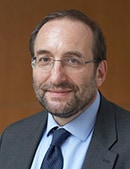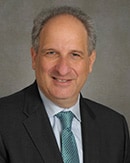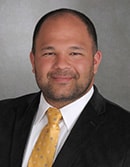Research Meeting Proceedings
June 17th through 18th, 2014
Through funding made available by the James Zadroga 9/11 Health and Compensation Act of 2010, NIOSH has awarded research grants to dozens of researchers to study the mental and physical health consequences of the September 11, 2001, terrorist attacks. In June 2014, NIOSH convened a meeting with these researchers. During that two-day meeting, NIOSH-funded researchers presented the status and preliminary results of their 9/11 health-related research projects. The meeting included presentations from over 20 researchers, who covered study topics as varied as the link between 9/11 exposures and illnesses, such as mental health conditions; cancer; respiratory and cardiovascular diseases; and autoimmune conditions; the physical health consequences of being injured during the September 11 terrorist attacks; the role of nasal pathology in 9/11-related obstructive sleep apnea; mind-body treatment for comorbid PTSD and respiratory illness; and others.
Featured below are the abstracts and study impact statements from each of these presentations which are designed to provide information to researchers about the current state of 9/11-related health research. NIOSH continues to fund and support researchers to further investigate the mental and physical health consequences of 9/11, and will convene similar research meetings twice per year.
Bronchial Reactivity and the Course of Lung Function

Principal Investigator: Thomas Aldrich, M.D.
Albert Einstein College of Medicine
718-920-6087 (office); 914-262-8855 (cell)
taldrich@montefiore.org
Research questions
Did bronchial reactivity influence the course of recovery or worsening function after WTC exposure?Did corticosteroid treatment influence the course of recovery or worsening function after WTC exposure?
Abstract
Firefighters participating in rescue/recovery work at the World Trade Center site lost an average of ~10% of FEV1 in the first post-9/11 year, with little apparent recovery (on average) over the next 6 years. This study assesses the post-9/11 courses of lung function as influenced by bronchial hyperreactivity (BHR) a biomarker for susceptibility to asthma, and by corticosteroid treatment.Data collection is continuing, but preliminary results are as follows: From January to October 2013, 154 firefighters (72% never-smokers) with normal pre-9/11 spirometry, who had BHR measurements within 2 years of 9/11/2001, underwent full lung function testing and repeat assessment of BHR. To adjust for aging, FEV1 was expressed as percent predicted (FEV1%).
Bronchial reactivity remained relatively stable, with a trend toward increasing reactivity.76% of firefighters reported using either inhaled and/or oral corticosteroids between 2001-2013. FEV1% declined by an average of 10% immediately post-9/11, and tended to decline further by 2013, averaging a 2.7 percentage points. Excluding 2 subjects with restrictive disease, a multiple regression model with dependent variable "subsequent" (2002-2013) change in FEV1%, showed significant (p=.03) negative contributions from initial FEV1% change and smoking, and a positive contribution from approximated steroid dose. Contribution of a composite index of BHR approached statistical significance, with more reactive subjects tending to show decreases in FEV1% (p=.08). .
In conclusion, BHR, when present, tended to persist over a decade. There was a strong trend toward association of BHR with worsening subsequent post-9/11 lung. Post-exposure corticosteroid treatment ameliorated some of the excess lung function decline.
Key Words: Lung function, bronchial reactivity, corticosteroids
Impact
In earlier work, we showed that World Trade Center (WTC)-exposed firefighters lost, on average, about 10% of their pre-9/11 pulmonary function, due almost entirely to the development of obstructive airways disease (OAD). Through the subsequent 6 years, there was, on average, surprisingly little evidence of recovery.Bronchial hyperreactivity-abnormal sensitivity to inhaled bronchoconstrictive agents, is a biomarker for susceptibility to asthma, and may predict rapid decline in lung function. This study re-examines a large sample of the previously-tested firefighters >10 years after 9/11, to define the natural history of WTC-associated OAD, to determine whether clinical outcomes varied according to their degree of bronchial reactivity, and to assess the influence of anti-inflammatory treatment (oral and/or inhaled corticosteroids).
Data collection is continuing, but our preliminary results are as follows. Between 1/13 and 4/14, we studied 164 firefighters. We found that steroid therapy was significantly associated with recovery of lung function and that bronchial reactivity, which tended to persist or slightly worsen over the decade since 9/11, was significantly associated with worsening lung function. Both effects were fairly strong, with the highest steroid dose predicting about 5 percentage points better result than those who did not receive steroids, and the most bronchial reactivity predicting about 5 percentage points worse result.
Taken together, these findings suggest a substantial role of airway inflammatory disease in WTC-associated obstructive airway disease, and, by extension, in any lung injury caused by massive inhalation of particulates. They reinforce previous findings that most of the WTC-associated lung disease is obstructive disease. They also demonstrate the importance of measuring lung function in advance of any lung injury, in potentially susceptible workers, for example, so as to allow accurate quantification of the injury and recovery from injury. They show that bronchial hyperreactivity is one factor that can be considered predictive of poor recovery from particulate inhalation injury. And, finally, they demonstrate that therapy with corticosteroids can ameliorate some of the lung injury resulting from inhalation of particulates.
Contributors
Thomas Aldrich, MD, Sean Dhar, MD, Tesha Crosse, RRT, Camille King, RRT, RPFT, Vasilios Christodoulou, Jessica Weakley, MPH, Gisela Banauch, MD, Kenneth Berger, MD, Michael Weiden, MD, Charles Hall, PhD, Fen Ye, MS, Mayris Webber, DrPH, MPH , David Prezant, MD.Montefiore Medical Center, Albert Einstein College of Medicine, NYU School of Medicine, and the Fire Department of New York (FDNY).
Evaluation of Distal Airway Injury Following Exposure to World Trade Center Dust

New York University School of Medicine,
240 East 38th Street, Room M-15,
New York, NY 10016
www.med.nyu.edu
212-263-6407
Kenneth.berger@nyumc.org
Research objectives
To enhance characterization of airway injury in subjects enrolled in the Bellevue Hospital WTC EHC by evaluating spirometry and assessment of distal airway function utilizing oscillometry.To determine the relationship between development of distal airway dysfunction and simultaneous development of respiratory symptoms during induced bronchoconstriction in subjects enrolled in the Bellevue Hospital WTC EHC
To determine longitudinal lung function as assessed by spirometry and oscillometry in a diverse population exposed to WTC dust while undergoing standardized evaluation and therapy.
The goal of this study is to enhance characterization of World Trade Center (WTC) related lung disease using lung function measurements that can detect lung injury in addition to abnormalities identified in standard spirometry. The research direction is based on the concept that spirometry may identify airway injury as a reduction in lung volume or air flow, however, spirometry can remain normal even in symptomatic patients, particularly when injury is located in the small or distal airways. The studies build upon prior histologic and functional evidence for distal airway abnormalities as a manifestation of obstructive lung diseases. Data have demonstrated:
- Distal airway dysfunction was evident in the majority of subjects even when spirometry remained within normal limits.
- The magnitude of distal airway dysfunction was correlated with WTC dust exposure and with severity of respiratory symptoms.
- Distal airway dysfunction provided a mechanism for the restrictive pattern seen in selected patients on spirometry (when chest radiograph was normal).
- Reactivity in distal airways was a mechanism for development of respiratory symptoms.
- Improvement in spirometry was identifiable in patients receiving standardized therapy.
- Improvement in oscillometry during standardized therapy was related to bronchodilator response at baseline.
- Residual abnormality was present in spirometry and oscillometry up to 7 years following enrollment in the BHC-EHC.
Key words: Airway dysfunction, Oscillometry, Lung physiopathology, Longitudinal studies
Impact
A "Small Airway Disease Syndrome" provides a mechanism for respiratory disease following WTC dust exposure even in subjects with normal screening spirometry. Addition of forced oscillation to routine assessment of spirometry in the clinical setting uncovered abnormalities in lung function in a persistently symptomatic population with normal spirometry. Studies confirmed a dose response relationship between small airway dysfunction to both magnitude of WTC dust expose, severity of symptoms and reactivity in small airways. Longitudinal data demonstrated improvement of small airway function in subjects with acute response to bronchodilator at baseline. The presence of small airway abnormalities suggests a potential target for treatment, particularly for subjects who remain symptomatic despite usual medical care.Other contributors
WTC EHC: Joan Reibman, M.D., Professor of Medicine; Roberta M. Goldring, M.D., Professor of Medicine; Yongzhao Shao, Ph.D., Professor of Environmental Medicine; Mengling Liu, Ph.D., Associate Professor of Environmental Medicine; Michael Marmor, Ph.D. Professor of Population Health; Caralee Caplan-Shaw, M.D., Assistant Professor of Medicine; Meredith Turetz, M.D., Assistant Professor of Medicine; Deepak Pradhan, M.D., Instructor of Medicine; Angeliki Kazeros, M.D., Assistant Professor of Medicine; Beno W. Oppenheimer, M.D., Assistant Professor of Medicine; Denise Harrison, M.D., Assistant Professor of Medicine; Ioannis Vlahos, M.D., Assistant Professor of Radiology; Sam Parsia, M.D., Assistant Professor of Medicine; Meng Qian, Research Associate; Quinyi Chen, Research Associate; Samantha Kalish, Research Associate; Maria-Elena Fernandez-Beros, Database ManagerNYC DOHMH: Stephen Friedman, M.D.; Carrie Maslow, Dr.Ph.; Mark Farfel, Sc.D.
Additional Resources or References
http://www.med.nyu.edu/biosketch/bergek01#
https://www1.nyc.gov/site/hpd/index.page
Oppenheimer BW, Goldring RM, Reibman J, Herberg ME, Hofer IS, Rom WN, Berger KI. Distal airway function in symptomatic subjects with normal spirometry following World Trade Center dust exposure. Chest 2007; 132:1275-1282. Turetz MD, Berger K, Goldring R, Caplan-Shaw C, Kazeros A, Parsia S, Liu M, Cheng Q, Reibman J. Symptoms and lung function, including impulse oscillometry, in a diverse population with World Trade Center dust exposure. Am J Respir Crit Care Med 2010; 181:A1255.
Friedman SM, Maslow CB, Reibman J, Pillai PR, Goldring RM, Farfel MR, Berger KI. Case-control study of lung function in World Trade Center Health Registry area residents and workers. Am J Respir Crit Care Med 2011; 184:582-589. Caplan-Shaw CE, Yee H, Rogers L, Abraham J, Parsia SS, Naidich DP, Borczuk A, Moreira A, Shiau MC, Ko JP, Brusca-Augello G, Berger KI, Goldring R, Reibman J. Lung pathologic findings in a local residential and working community exposed to World Trade Center dust, gas and fumes. J Occup Environ Med 2011; 53:981-91.
Liu M, Qian M, Chen Q, Berger KI, Shao Y, Turetz M, Kazeros A, Parsia S, Goldring RM, Fernandez-Beros M-E, Marmor M, Reibman J. Longitudinal spirometry among patients in a treatment program for community members with World Trade Center (WTC)-related illness. J Occup Environ Med 2012; 54:1208-13.
Berger KI, Reibman J, Oppenheimer BW, Vlahos I, Harrison D, Goldring RM. Lessons from the WTC Disaster: Airway Disease Presenting as Restrictive Dysfunction. Chest 2013; 144:249-257.
Berger KI, Kalish S, Shao Y, Marmor M, Kazeros A, Bender W, Ma JP, Zhang E, Oppenheimer BW, Reibman J, Goldring RM. Isolated distal airway dysfunction as a mechanism for development of respiratory symptoms during bronchoprovocation in WTC dust exposed community members. Am J Respir Crit Care Med 2013; 187:A1942.
Pradhan DR, Xu N, Berger KI, Goldring RM, Liu M, Shao Y, Kazeros A, Caplan-Shaw C, Reibman J. Bronchodilator responsiveness of the distal lung in community members with exposure to World Trade Center dust and fumes. ATS 2014.
Cancer among WTC Responders: Enhanced Surveillance, Exposure Assessment, and Cancer Specific Risks

Icahn School of Medicine at Mount Sinai
212-659-1474
paolo.boffetta@mssm.edu
Research questions
Is cancer risk increased among WTC responders?Can any increased risk be associated with WTC exposure?
Abstract
World Trade Center (WTC) rescue and recovery workers enrolled in the WTC Health Program (WTCHP) were exposed to a complex mix of pollutants and carcinogens. Data on WTC responders were linked the tumor registries of New York, New Jersey, Connecticut, and Pennsylvania. Standardized incidence ratios (SIRs) were calculated to compare cancer by site in responders with that predicted for the general population adjusted for age, sex, and ethnicity/race. A preliminary Exposure Index was developed, integrating number of days on site, specific occupation, and work on debris pile. An enhanced Cancer Exposure Reconstruction Index (C-ERI) has also been developed, which addressed exposure to known and suspected carcinogens, based on date/time, location, job/activity and use of personal protection equipment. In addition, estimate of the Occupational Cancer Risk Indices, specific for 17 occupation-related cancers and based on employment in occupation associated with cancer risk in jobs held before and after the WTC experience, were developed for about 50% of cohort members. A total of 575 cancers were diagnosed up to 12/31/2008 among 20,984 consented responders. After excluding the first six month after enrollment, the standardized incidence ratio (SIR) for all cancers combined was 1.06 (95% confidence interval [CI] 0.94-1.18), that for thyroid cancer was 3.12 (95% CI 2.04-4.57) and that of lung cancer was 0.62 (95% CI 0.37-0.98). Analyses according to C-ERI and OCRI are on-going. These preliminary findings highlight the need for continued follow-up and surveillance of WTC responders.
Key Words: cancer, exposure assessment, occupation
Impact
The results will help to clarify whether WTC responders have an increased risk of cancer, and specifically (i) to identify cancers (if any) at increased risk, (ii) to quantify the magnitude of the associations, and (iii) to identify characteristics of WTC exposure which are more strongly associated with cancer risk. This information will be important to establish preventive actions such as enhanced medical surveillance and targeted screening. Although the study is conducted in occupationally exposed responders, the results will be relevant to other individuals exposed to the WTC attacks.Additional Resources or References
Solan et al. Cancer incidence in world trade center rescue and recovery workers, 2001-2008. Environ Health Perspect 2013;121:699-704. http://www.ncbi.nlm.nih.gov/pmc/articles/PMC3672914/Chronic Physical Health Consequences of Being Injured During the Terrorist Attacks on World Trade Center on September 11, 2001

347-396-2882
rbrackbi@health.nyc.gov
Principal Investigator: Mark Farfel, ScD, Director, WTC Health Registry (not pictured)
347-396-2876
mfarfel@health.nyc.gov
Research questions
Is there a relationship between 9/11-related injury and emerging chronic health conditions?To what extent does PTSD contribute to an injury-chronic conditions relationship?
Does the likelihood of chronic increase with injury severity?
Abstract
Few studies have focused on injuries from the World Trade Center (WTC) disaster on September 11, 2001 (9/11). Severe injury has health consequences, including elevated mortality 10 years post-injury and risk for mental health problems such as posttraumatic stress disorder (PTSD). The WTC Health Registry identified 14,087 persons with no pre-existing selected chronic conditions before 2002 who were present during and soon after the WTC attacks, 1,980 of whom reported sustaining 1 or more types of injury (e.g., broken bone or burn). Survey data obtained during 2003-2004 and 2006-2007 were used to assess the odds of reporting diagnosed chronic conditions (heart disease, respiratory disease, diabetes, cancer) up to 5 - 6 years after 9/11. Number of injury types and probable PTSD were significantly associated with any 2002-2007 diagnosed chronic conditions. Persons with multiple injuries and PTSD had a 3-fold higher risk of heart disease compared with those with no injury and no PTSD and persons with multiple injuries and with no PTSD had a two-fold risk of respiratory diseases. This study demonstrates elevated risk of chronic diseases among injured persons with/without comorbid PTSD. Clinicians should be aware of heightened risk of chronic heart and respiratory conditions among injured persons.Key Words: 9/11 injuries, PTSD, Physical Health
Impact
The presentation focused on a recently published a paper (AJE, 2014,179:1078-1085) that showed that severity of injury measured by number of types of injury had a significant dose response association with the likelihood of physical chronic conditions diagnosed between 2002 and 2007. The analysis also demonstrated that the association of injury with chronic conditions including heart and respiratory diseases was independent of PTSD symptoms reported at Wave 1 and that the combined effects of multiple injuries and PTSD was substantial, especially for heart disease. Preliminary analysis of data collected by the Registry between 2011 and 2012 found that multiple injuries continued to be significantly associated with physical conditions diagnosed from 2008 to 2012. Clinicians should be aware of the heightened risk of chronic heart and respiratory conditions among persons injured on September 11, 2011.Additional Resources or References
Any additional information that supports, highlights, clarifies or is important for further understanding of your presentation. (Web links wherever possible)Link to the manuscript presented
http://aje.oxfordjournals.org/content/179/9/1076.full.pdf+htmlBurden of Mental-Physical Comorbidity in World Trade Center Responders

State University of New York at Stony Brook
631-632-8853
evelyn.bromet@stonybrook.edu
Research questions
What are the relationships of current DSM-IV PTSD and lower respiratory illness to impairments in functioning?Are the effects of lower respiratory illness explained by PTSD?
Are the relationships additive, synergistic, or both?
Abstract
OBJECTIVE:Prior studies of general population and primary care samples find strong associations between mental and physical health. Each domain is related to psychosocial functioning. However, epidemiologic analyses find that the physical health associations disappear after adjusting for mental health. The aim of this talk is to assess the patterns for PTSD, lower respiratory symptoms (LRS), and psychosocial impairments in WTC responders seen at the SB/LI WTC-HP.
METHOD: A sample of 2,646 responders participated in the Health & Wellness Project during their monitoring visit (response rate 93%). The Project included the SCID PTSD and depression modules, a measure of functional impairment (RIFT), health risk perceptions, and subjective health ratings. DCC data on demographics, current LRS, health risk factors, and exposure were obtained. Hierarchical logistic regression analyses examined the relative contribution of current DSM-IV WTC- PTSD and LRS to impairments, adjusting for demographic, exposure, and health risk factors.
RESULTS: percent had current PTSD, and 43% had LRS. The odds ratio was 4.4, and the two conditions shared 8 risk factors. PTSD and LRS were independently associated with impairment (loneliness, poor subjective health, low life satisfaction, poor marital relationship, negative health risk perception). Except for subjective health, the associations for PTSD were stronger. Interaction effects were non-significant.
CONCLUSIONS: In contrast to general population studies, associations of LRS with impairment were not explained away by PTSD. The findings support the importance of integrated care models and mind-body approaches to treating physical and mental health problems simultaneously.
Keywords: lower respiratory illness; impaired functioning
Impact
Our research program has shown that mental and physical health have walked arm-in-arm throughout the 12 years since 9/11. For WTC responders, PTSD and lower respiratory distress are particularly impacted. One reason is that both conditions arose from the horrific environmental and psychological exposures at the WTC site. Another reason, as our work suggests, is that these exposures led to basic biological changes that impact both mental and physical health. Consistent with this picture, we documented that both aspects of health place a significant burden on occupational, social, and family functioning. The lesson learned is that adequate medical care requires an integrated approach that treats both the mind and the body simultaneously.
Association between WTC Exposure and Excess Cancer Risk: Initial Findings from the WTC Health Registry

347-396-2869
jcone@health.nyc.gov
Principal Investigator: Mark Farfel, ScD, Director, WTC Health Registry (not pictured)
347-396-2876
mfarfel@health.nyc.gov
Research questions
What is the incidence of cancer in the WTC Health Registry?Is there an association between exposure and specific cancer types?
What are the sensitivity, specificity and positive predictive value of self-reported cancer?
Abstract
Objective To evaluate cancer incidence among persons enrolled in the World Trade Center Health Registry (WTCHR).Methods Observational study of 55 778 New York State residents enrolled in the WTCHR in 2003-2004, followed from enrollment through December 31, 2008. Cases were identified through linkage with 11 state cancer registries. Standardized incidence ratios (SIRs) adjusted for age, race/ethnicity, and sex were computed with 2003-2008 New York State reference rates. Agreement between cancers self-reported on WTCHR surveys and cancer registry cases was assessed by sensitivity, specificity and positive predictive values. Correlates associated with under- or over-reporting were examined using logistic regression.
Results 1187 incident cancers were diagnosed, with an accumulated 253 269 person-years. The SIR for all cancer sites combined in 2007-2008 was not significantly elevated (SIR, 1.14 [95% CI, 0.99 to 1.30] among responders vs SIR, 0.92 [95% CI, 0.83 to 1.03] among survivors). Among rescue/recovery workers, cancers with significantly increased SIRs by 2007-2008 included prostate cancer (1.43, 95% CI, 1.11 to 1.82), thyroid cancer (2.02, 95% CI, 1.07 to 3.45), and multiple myeloma (2.85, 95% CI, 1.15 to 5.88). Overall sensitivity and specificity of self-reported cancer were 83.9% (95% CI=81.9-85.9) and 98.5% (95% CI=98.4-98.6), respectively. Underreporting was greatest among non-Hispanic blacks and Asians.
Conclusions Among persons enrolled in the WTCHR, there was an excess risk for prostate cancer, thyroid cancer, and myeloma in 2007- 2008 compared with that for New York State residents. Sensitivity and specificity of self-reported cancer were relatively high.
Impact
The WTCHR cancer incidence study suggests that overall cancer rates do not appear to be elevated, up to the end of 2008, among survivor or responder populations. However, there appears to be a significantly increased incidence of specific cancers, including prostate cancer, thyroid cancer and multiple myeloma, among responders. Increased medical screening cannot be ruled out as a potential cause for prostate or thyroid cancer.Many types of cancer in addition to the three types found to be increased in this study are currently recognized by the World Trade Center Health Program as potentially World Trade Center exposure-related. Survivors and responders are encouraged to contact the WTCHP (1-888-982-4748 or www.cdc.gov/wtc/index.html) if they have questions about accessing available resources for cancer evaluation or treatment.
Additional Resources or References
Li J, Cone JE, Kahn AR, et al. Association Between World Trade Center Exposure and Excess Cancer Risk. JAMA.2012;308(23):2479-2488. doi:10.1001/jama.2012.110980.Trajectories of Psychological Risk and Resilience in World Trade Center Responders

Icahn School of Medicine at Mount Sinai, One Gustave L. Levy Place, Box 1230, New York, NY 10029 www.mssm.edu
212-659-9145, fax: 212-659-9291,
adriana.feder@mssm.edu
Principal Investigators: Adriana Feder, MD, Robert H. Pietrzak, PhD, MPH, Steven M. Southwick, MD
Research Questions
To characterize longitudinal trajectories of WTC-related posttraumatic stress disorder (PTSD) in WTC respondersTo examine specific risk and protective determinants of these trajectories
To identify personal and psychosocial factors associated with resilience and recovery trajectories, with the ultimate goal of maximizing preparedness and improving mental health outcomes in disaster responders.
Abstract
The objectives of the World Trade Center (WTC) Trajectories study are to (1) characterize longitudinal trajectories of WTC-related posttraumatic stress disorder (PTSD) in WTC responders; (2) examine specific risk and protective determinants of these trajectories; and (3) identify personal and psychosocial factors associated with resilience and recovery trajectories, with the ultimate goal of maximizing preparedness and improving mental health outcomes in disaster responders.A total of 10,835 WTC rescue, recovery and clean-up workers, including 4,035 police responders and 6,800 non-traditional responders (e.g., construction workers), completed health monitoring visits at the WTC Health Program an average of 3, 6 and 8 years after 9/11/01. In police responders, the focus of this presentation, longitudinal PTSD symptoms were best characterized by 4 classes, with the majority (77.8%) in a resistant/resilient trajectory and the remainder exhibiting chronic (5.3%), recovering (8.4%) or delayed-onset (8.5%) symptom trajectories. The following predictors were most strongly associated with symptomatic trajectories: psychiatry history prior to 9/11/01, Hispanic ethnicity, WTC exposure severity and WTC-related medical conditions. Greater education, and family and work support while working for the WTC recovery effort were protective.
Further, confirmatory factor analyses suggested that five stable symptom clusters best represent PTSD symptom dimensionality in WTC responders. Results of autoregressive cross-lagged panel regressions revealed that hyperarousal symptoms had a prominent role in predicting other PTSD symptom clusters over time.
Study results underscore the importance of prevention, screening and treatment efforts targeting high-risk disaster responders, in particular those with prior psychiatric history, higher disaster-related trauma exposure and work-related medical conditions. These results also highlight the importance of early assessment and treatment of hyperarousal symptoms in disaster responders.
Key Words: WTC responders, longitudinal, posttraumatic stress disorder, risk factors
Impact
Results of our WTC Trajectories study suggest that WTC-related posttraumatic stress disorder (PTSD) symptoms in WTC responders are heterogeneous in nature and associated uniquely with pre-, peri- and post-trauma risk and protective factors. Police responders were more likely than non-traditional responders to exhibit a resistant/resilient trajectory (77.8% vs. 58.0%). These results underscore the importance of prevention, screening, and treatment efforts that target high-risk disaster responders, particularly those with prior psychiatric history, high levels of trauma exposure and work-related medical morbidities. They further suggest that assessment, monitoring and early intervention of hyperarousal symptoms may help mitigate chronicity of disaster-related PTSD symptoms in WTC and other disaster responders.Other contributers
Robert H. Pietrzak, PhD, MPH; Steven M. Southwick, MD; Clyde B. Schechter, MD; Evelyn J. Bromet, PhD; Jeanne M. Stellman, PhD; and many others
References
Pietrzak RH, Feder A, Singh R, et al: Trajectories of PTSD risk and resilience in World Trade Center responders: an 8-year prospective cohort study. Psychol Med. 2014 Jan;44(1):205-19.Pietrzak RH, Feder A, Schechter CB, et al: Dimensional structure and course of post-traumatic stress symptomatology in World Trade Center responders. Psychol Med. 2013 Dec 2:1-14. [Epub ahead of print]
For How Long is WTC Exposure Associated with Incident Airway Obstruction

Other key personnel: David Prezant, MD, Mayris Webber, DrPH.
Albert Einstein College of Medicine, 1300 Morris Park Ave., Bronx NY 10461
917-803-5470
charles.hall@einsteinmed.org
www.einsteinmed.org/
Research questions
For how long is WTC exposure associated with incident obstructive airway disease?What is the magnitude of the exposure-response relationship between WTC exposure and incident obstructive airway disease?
Is the relationship between WTC exposure and incident obstructive airway disease limited to a single subtype of obstructive airway disease?
Abstract
Respiratory disorders are associated with occupational/environmental exposures. The latency period between exposure and disease onset remains uncertain. The World Trade Center (WTC) disaster presents a unique opportunity to describe the latency period for obstructive airway disease (OAD) diagnoses. This prospective cohort study of New York City firefighters compared the timing and incidence of physician-diagnosed OAD relative to WTC-exposure. Exposure was categorized by WTC arrival time: high (9/11/2001 AM); moderate (9/11/2001 PM or 9/12/2001); or low (9/13/-24/2001). We modeled relative rates (RR) and 95% confidence intervals (CI) of OAD incidence by exposure over the first 5 years post-9/11/2001, estimating the time(s) of change in the RR with change point models. We observed a change point at 15 months post-9/11/2001. Before 15 months the RR for the high versus low exposure group was 3.96 (95% CI=2.51-6.26) and thereafter, 1.76 (95% CI=1.26-2.46). Incident OAD was associated with WTC-exposure for at least 5 years post-9/11/2001. There were increased rates of new-onset OAD among the high-exposed during the first 15-months and, to a lesser extent, throughout follow-up. This difference in RR by exposure occurred despite full and free access to healthcare for all WTC-exposed firefighters, demonstrating the persistence of WTC-associated OAD risk.Key Words: Change point model, Latency, Obstructive airway disease, Rescue/recovery workers
Impact
Conventional wisdom has been that new incident obstructive airway disease (OAD) that is associated with environmental or occupational exposure would present weeks to months, not years, after exposure. This research in the FDNY firefighter cohort found that physician diagnosis of incident OAD is associated with World Trade Center (WTC) exposure for at least five years after the exposure. These results support current policy to provide health care for these conditions to exposed rescue/recovery workers regardless of the year of diagnosis, and also adds to the body of evidence that WTC exposure was fundamentally different from previous severe occupational and environmental exposures.
Resources or References
Manuscript based on this research is to appear in American Journal of Epidemiology.Cardiovascular disease among adult members of the World Trade Center Health Registry

347-396-2865
hjordan1@health.nyc.gov
Principal Investigator: Mark Farfel, ScD, Director, (not pictured)
347-396-2876
mfarfel@health.nyc.gov
Research question
Were 9/11-related environmental exposures or PTSD associated with a sustained increase in the risk of CVD?Abstract
Objective: To examine associations between 9/11-related exposures, posttraumatic stress disorder (PTSD), and cardiovascular disease (CVD) among persons exposed to the 9/11/2001 World Trade Center disaster.Methods: Prospective studies of (a) incident self-reported, physician-diagnosed heart disease during 2002-2007 and (b) cardiovascular disease hospitalizations during 2002-2010 ascertained via the New York State hospital discharge reporting system among World Trade Center Health Registry enrollees aged >18 years on 9/11/2001.
Results: Both self-reported heart disease and objectively-documented cardiovascular disease hospitalizations were associated with measures of 9/11-related exposure and with 9/11-related PTSD.
Conclusion: These exploratory studies suggest that persons who experienced intense 9/11-related environmental exposures or developed 9/11-related PTSD may be at an increased risk of cardiovascular disease.
Key words: cardiovascular disease, heart disease, PTSD, World Trade Center
Impact
Findings from the World Trade Center Health Registry suggest that 9/11-related PTSD and intense rescue/recovery-related exposures may have increased the risk of hospitalization for heart disease and stroke, consistent with earlier findings based on self-reported illnesses. This suggests that medical follow-up of persons who developed 9/11-related PTSD or performed intensive rescue/recovery work in response to the disaster should include screening for modifiable cardiovascular disease risk factors, such as smoking and high blood pressure. These findings also emphasize the importance of providing integrated mental and physical health care for individuals who were exposed to the disaster.Additional Resources or References
http://jaha.ahajournals.org/content/2/5/e000431.longhttp://www.sciencedirect.com/science/article/pii/S0091743511004336
Health and Socioeconomic Sequelae of the WTC Disaster among Responders

Hofstra North Shore-LIJ School of Medicine,
175 Community Dr.
Great Neck, NY 11021
516-465-2517
hkim8@nshs.edu
http://medicine.hofstra.edu/
Research questions
Do WTC responders have increased risk of adverse health outcomes compared to general population?Have WTC exposures increased risk of new onset of asthma among responders?
Does Respirator use have a protective effect on asthma and rheumatoid arthritis?
Abstract
Overall health status of WTC responders was evaluated by comparing prevalence of five major health outcomes to the general population surveyed by the National Health Interview Survey (NHIS). Potential associations between new onset of asthma and WTC exposures were investigated, especially the protective effect of respirator use during rescue and recovery activities.A total of 26,796 responders who participated in the WTC Health Program (WTCHP) from 2002-2010 were included in the analysis. Standardized Morbidity Ratios (SMR) were calculated after adjusting for age and occupation, separately, and stratified by gender. Self-reported life-time prevalence of each outcome was used for SMR. Internal comparison was conducted for asthma incidence. Incidence Rate Ratios (IRR) were estimated using the generalized estimating equations with robust Poisson family and log link.
SMR for asthma was the only outcome showing an elevated rate compared to the general population. From the internal comparison, protective service (IRR=1.31 (1.12-1.54)) and utility workers (IRR=1.39 (1.11-1.73) had a higher risk of experiencing asthma compared to construction workers. Responders who arrived at the site on 9/11 not in the dust cloud (IRR=0.81 (0.71-0.93)) or later had a lower risk of getting asthma than those who arrived on 9/11 in the dust cloud. Notably, responders who used a full/half-face respirator on 9/11-9/18 had a significantly lower risk (IRR=0.70 (0.60-0.82) than when none was worn.
We confirmed that asthma was the main health problem among WTC responders, though we did not observe an increased risk of the other four health outcomes. We also found a clear protective effect of using a respirator on asthma incidence. This is an important finding not only for future disaster preparedness but also for protecting general workers from their daily occupational exposures.
Key words: WTC responders, Standardized Morbidity Ratio, respirator use
Impact
Asthma was highly prevalent among WTC responders while other health outcomes were not. Significant protective effect for asthma and rheumatoid arthritis was observed among those who used a respirator while working at WTC sitesOther Contributers
Bian Liu, PhD, Assistant professor; Francine Smith, MPH, Program coordinator; Sherry Baron, MD, MS, Professor; David Kriebel, ScD, Professor; Jacqueline Moline, MD MS, ChairCardiovascular Health Impact and Prediction of Incident (primary and subsequent) Cardiovascular Events among WTC Responders

alfredo.morabia@qc.cuny.edu
Center for the Biology of Natural Systems (CBNS), at Queens College; CBNS, Queens College, Remsen Hall 311; 65-30 Kissena Blvd; Flushing, New York 11367
www.cbns-environmentalhealth.org
718-670-4182

zlaskaris@qc.cuny.edu,
Research questions
Are WTC Responders at greater CHD risk then NY residents who did not endure a direct WTC disaster exposure?Should CHD be added to the list of WTC related health conditions?
Does the FHS underestimate the risk of CHD among WTC-responders?
Abstract
Background: The WTC-Heart cohort study's primary objective is to examine whether the Framingham Heart Study (FHS) score for coronary heart disease (CHD) predicts the risk for primary and subsequent myocardial infarction (MI) and stroke among rescue workers and volunteers (responders) that survived the 9/11 World Trade Center (WTC) disaster. Extra risk factors not included in the FHS score are a) heavy exposure to the 9/11 dust cloud and b) PTSD and depression. The second objective is to compare the CHD risk of WTC responders aged over 55 to that of the INVEST cohort, comprised of Washington Heights, NYC residents who were not directly exposed to the air pollution and mental stress at Ground Zero.Method: WTC-Heart (N=6,481) is a sub-cohort of responders enrolled in the World Trade Center Health Program (WTCHP), Mt. Sinai and North Shore sites. Participants were actively recruited at annual monitoring visits at the WTCHP. Determinants of cardiovascular disease, 9/11 exposure, depression, and probable PTSD were measured on the date of enrollment using clinical exams and supplemental questionnaires. An on-going follow-up for incident MI and stroke consists of annual screenings, secondary telephone interviews, and medical record review. The 2-year predicted risk of CHD and the observed risk will be calculated using baseline characteristics and the results of the follow-up, respectively. Comparisons with the INVEST cohort will be done at the end of the 2-year follow-up.
Key Words: World Trade Center, Cardiovascular Disease, Mental Health, Air pollution.
Impact
Several research studies indicate that people working or residing near Ground Zero in 2001-2002 are at increased risk of cardiovascular disease (CVD). It is hypothesized that this increased risk is a result of exposure to the dust and gases liberated by the destruction of the twin towers and/or the psychological stress of working in such dramatic human and environmental disaster. WTC-Heart (n=6,481) is a rigorous cohort study comprised of responders and volunteers recruited at the WTC Health Program (WTCHP). WTC-Heart will provide unique evidence of observed CVD risk and predicted CVD risk of WTC responders. This information will guide preventive interventions, such as a screening for WTC-specific CVD risk factors and providing CV education that emphasizes both mental and physical health, improve treatment and the care coverage of WTC responders.Epigenetic Linkage between PTSD and Respiratory Disease in WTC Responders

631-855-1200
Benjamin.luft@stonybrookmedicine.edu
Research questions
Are there specific methylation changes in the DNA of responders with PTSD that differentiate them from those without PTSD?Are there epigenetic changes in specific immune genes of patients with PTSD that may predispose them to respiratory illness?
Abstract
As a direct result of the toxic exposure at the World Trade Center, responders exhibit persistent symptoms of post-traumatic stress disorder (PTSD) and respiratory illness. Indeed, one-quarter of responders affected by these conditions suffer from both mental and physical comorbidity.The overall goal of this study is to explicate the mechanisms linking PTSD and lower respiratory symptoms (LRS) in WTC responders through an epigenetics approach. Given longitudinal findings from observational data on the pathway from WTC exposures to PTSD to respiratory illness and supportive biological data, ecogenomics is the logical next step for understanding immune dysregulation and thus increased persistence of symptoms over time. In the long-term, identification of biomarkers using an epigenetic approach may help to uncover new tools to genetically characterize different pathways to PTSD and respiratory illness in responders.
Specifically, we will determine and compare the methylation pattern of the peripheral blood DNA of patients with WTC-PTSD and patients who never developed PTSD. In a similar manner we will compare patients with chronic WTC-PTSD and those with PTSD in remission
We will also examine differences in methylation patterns among responders with (a) comorbid WTC-PTSD and respiratory illness, (b) only respiratory illness, (c) only WTC-PTSD, and (d) neither respiratory illness nor WTC-PTSD. We expect to recruit 400 responders for this genetic analysis. It is hoped that ultimately this information will lead to new diagnostic and therapeutic approaches to the disease associated with the WTC disaster.
Key words: PTSD, respiratory disease, methylation, epigenetics.
Impact
Our research program has shown that mental and physical health have walked arm-in-arm throughout the 12 years since 9/11. For WTC responders, PTSD and lower respiratory distress are particularly impacted. One reason is that both conditions arose from the horrific environmental and psychological exposures at the WTC site. Another reason, as our work suggests, is that these exposures led to basic biological changes that impact both mental and physical health. Consistent with this picture, we documented that both aspects of health place a significant burden on occupational, social, and family functioning. The lesson learned is that adequate medical care requires an integrated approach that treats both the mind and the body simultaneously.Other contributors
Evelyn Bromet, Ph.D., Distinguished Professor, Director, Epidemiology Research Group, Department of Psychiatry, SUNY at Stony Brook; Roman Kotov, M.D., Assistant Professor, Department of Psychiatry, SUNY at Stony Brook; Karestan Koenen, Ph.D., Associate Professor, Director, Psychiatric-Neurological Epidemiology Cluster Department of Epidemiology, Mailman School of Public Health, Columbia University; Guia Guffanti, Ph.D., Assistant Professor of Clinical Neurobiology in Psychiatry, Department of Psychiatry, Division of Epidemiology & Division of Child and Adolescent Psychiatry, Columbia University/NYSPI
New York University School of Medicine
212-263-6667
michael.marmor@nyumc.org
Research questions
Were trace elements from WTC-contaminants released on 9/11/2001 still present in tissues of World Trade Center Health Registry enrollees who died and were autopsied in 2007-2012?Do trace element concentrations in the tissues of autopsied WTCHR decedents correlate with interview-based estimates of exposure?
Do histologic findings correlate with tissue burden of WTC-contaminants?
Abstract
This project aims to test the hypothesis that World Trade Center (WTC)-related trace elements remained in human tissues years after 9/11/2001 and may be useful in the development of biomarkers of WTC exposure. To test this hypothesis, we are collecting tissues from ~88 WTC Health Registry (WTCHR)-enrollees who died in 2007-2012 in ways that required autopsy and from ~ 62 matched "community control autopsies." Concentrations of 34 elements are being measured by inductively-coupled plasma mass spectrometry.Preliminary data indicate significantly higher trace or major element concentrations in peripheral lung among 7 individuals with high self-reported WTC exposure compared to 17 with lower self-reported exposures for Pb (median=0.31 vs. 0.14, p=0.03) and Al (34.0 high vs. 11.8 low, p=0.04. In central lung samples, we observed no significant differences. Other preliminary findings are:
Kidney: Mo significantly higher among 5 highly-WTC-exposed individuals vs. 17 less-exposed.
Liver: Ca (1128.65 vs. 674.31, p=0.03) and Cs (0.02 vs. 0.00, p=0.05) significantly higher among 6 highly-exposed individuals vs. 17 from less-exposed individuals.
Spleen: Pb (0.41 vs. 0.09, p=0.04) was significantly higher among 6 highly-exposed individuals compared to 15 less-exposed individuals.
Lymph Node: No significant differences between 5 highly-exposed individuals compared to 9 less-exposed individuals.
These data support our project's hypothesis. Our ongoing study will further investigate the study hypothesis in larger numbers of subjects and the sample of community controls.
Key Words: Biomarkers, trace elements, decedents, World Trade Center Health Registry
Impact
This project seeks to identify biomarkers of exposure to the World Trade Center (WTC) disaster. In pursuit of this goal, we are measuring trace and major elements in tissues obtained from individuals enrolled in the World Trade Center Health Registry (WTCHR) who died and were autopsied in 2007-2012. Our findings, through mid-June 2014, are that unusual trace and major elements were present in autopsy tissues among individuals who died in 2008-2009 and that concentrations of these elements appear to be correlated with interview-based estimates of WTC exposure. In our continuing studies, we will analyze additional samples from individuals who died in 2007-2012. We will explore whether trace and major element concentrations in tissues, coupled with interview data, can provide more accurate estimates of WTC exposures than interview data alone. In the long-run, we hope to translate biomarkers identified from the present study into non-invasive biomarkers that can be used in studies of WTC survivors. Such biomarkers could be of value to etiologic research investigating health conditions observed among first responders, residents and workers, including members of the WTCHR; and also may aid in the treatment of WTC-associated diseases.Autoimmune Disease among WTCHR Registrants: Survey Design and Preliminary Response Rates

347-396-2884
smille12@health.nyc.gov
Principal Investigator: Mark Farfel, ScD, Director, WTC Health Registry (not pictured)
347-396-2876
mfarfel@health.nyc.gov
Research objectives
Describe the incidence of post-9/11 autoimmune disease in the World Trade Center Health Registry populationVerify self-reported diagnoses of post-9/11 autoimmune disease
Examine the relationship between 9/11-related exposures, PTSD and autoimmune disease
Abstract
Background: The September 11, 2001 terrorist attack on the World Trade Center exposed many rescue/recovery workers and survivors to environmental agents that have been previously found to trigger or exacerbate systemic autoimmune disease. Additionally, posttraumatic stress disorder (PTSD), one of the most common mental health outcomes of the 9/11 disaster, has been associated with autoimmune disease. If and how these environmental and mental health-related risk factors may play a role in incident post-9/11 autoimmune disease is not known.Objectives: This study will describe the incidence of post-9/11 autoimmune disease among World Trade Center Health Registry (WTCHR) enrollees. Medical record review will be conducted to verify self-reported diagnoses of incident autoimmune disease. Finally, this study will examine the relationship between 9/11-related exposures, PTSD and autoimmune disease using a nested, case-control study.
Methods: The WTCHR, a prospective cohort of 71,434, has collected three waves of data (2003-2012) on physical and mental health status, sociodemographic characteristics and 9/11-related exposures. In May 2014, web and paper surveys were sent to 2,786 enrollees who reported post-2001 rheumatoid arthritis or other autoimmune diseases at the Registry's Wave 3 survey (2011-2012). The questionnaire was based on the Connective Tissue Disease Screening Questionnaire, and also queried general health status, medication use, and family history of autoimmune disease.
Results: After one month of data collection, 1,230 (44%) responses had been received. Among web responses (n=453), 155 reported physician-diagnosed rheumatoid arthritis, and an additional 145 screened positive as potential rheumatoid arthritis cases.
Key Words: autoimmune disease; rheumatoid arthritis; nested case-control study
Impact
The World Trade Center Health Registry is currently conducting an in-depth study on post-9/11 systemic autoimmune diseases (AD) among survivors and responders, including a medical record review to verify diagnoses. Prior epidemiologic evidence has linked crystalline silica, a WTC dust constituent, and posttraumatic stress disorder to various AD. However, it is not known whether AD are associated with WTC exposure. This study, combined with other studies of AD among WTC-exposed populations, will contribute to the knowledge about 9/11-related environmental exposures possibly associated with AD.Additional Resources or References
Boscarino JA, Forsberg CW, Goldberg J. 2010. A twin study of the association between PTSD symptoms and rheumatoid arthritis. Psychosom Med 72: 481-486.Karlson E, Sanchez-Guerrero J, Wright E, Lew R, Daltroy L, Katz J, Liang MH. 1995. A connective tissue disease screening questionnaire for population studies. Ann Epidemiology 5: 297-302.
Cohort Studies of Incident Cancers in the FDNY WTC Responder Population

Fire Department of the City of New York
718-999-2696
prezand@fdny.nyc.gov
Research objectives
To examine the incidence of cancer among male firefighters exposed to the WTC disaster.To evaluate the possibility of excess risk of cancer among WTC-exposed male firefighters.
Abstract
We examined cancer incidence and its potential association with World Trade Center (WTC) exposure in the first 7 years after 9/11 in firefighters with health information before 9/11 and minimal loss to follow-up. We reported a modest excess of cancer cases in the WTC-exposed cohort compared with the US population. We remain cautious in our interpretation of this finding because the time since 9/11 is short for cancer outcomes, and the reported excess of cancers is not limited to specific organ types. As in any observational study, we cannot rule out the possibility that effects in the exposed group might be due to unidentified confounders. Continued follow-up will be important and should include cancer screening and prevention strategies.Key words: cancer, firefighters, WTC exposure
Impact
The results will help to clarify whether WTC responders have an increased risk of cancer, and specifically (i) to identify cancers (if any) at increased risk, (ii) to quantify the magnitude of the associations, and (iii) to identify characteristics of WTC exposure which are more strongly associated with cancer risk. This information will be important to establish preventive actions such as enhanced medical surveillance and targeted screening. Although the study is conducted in occupationally exposed responders, the results will be relevant to other individuals exposed to the WTC attacks."Obstructive Sleep Apnea in WTC Responders; Role of Nasal Pathology

NYU School of Medicine
732-235-7038
sunderja@rwjms.rutgers.edu

Research questions
Is there a relationship between chronic rhinosinusitis and new onset obstructive sleep apnea (OSA) in the World Trade Center Population?Does increase in nasal resistance due to nasal inflammation play a role in the development of OSA in those responders who have chronic rhinosinusitis?
Will CPAP adherence be affected by high nasal resistance in those with OSA and will reducing expiratory pressure using CPAP flex improve adherence?
Abstract
In WTC responders we hypothesized that chronic rhinosinusitis (CRS) would be associated with increased prevalence and severity of obstructive sleep apnea (OSA), mediated by elevated total nasal resistance (TNR). We report on the first 201 subjects (170M/31F, 34-77years, BMI 31.1+/-4.9 kg/m2). CRS was defined by =3 nasal/upper airway symptoms over the prior 8 weeks. TNR was measured with 4-phase Rhinomanometry in sitting and supine positions, pre and post nasal decongestion and high TNR defined as LogTNR =0.8. Epworth Sleepiness Scale (ESS) and Functional Outcome of Sleep Questionnaire (FOSQ) measured subjective sleepiness. OSA was assessed with two nights of limited-channel home sleep monitoring (ARES unicorder). Apnea+Hypopneas with 4% desaturation (AHI4) and 1% desaturation/arousal surrogate (RDI) were obtained and OSA defined as AHI4 =5/hr or RDI =15/hr.
RESULTS: As expected, women had higher sitting and supine LogTNR than men (p<0.001), supine LogTNR was higher than sitting LogTNR(P<0.0001) and was reduced after nasal decongestion. However, LogTNR was not correlated to BMI or CRS symptoms. 75.3% of the subjects had OSA and 47.7% of the subjects had CRS. 37.3% of subjects had CRS+OSA and 37.9% had OSA without CRS and the odds of OSA are not significantly increased with CRS. No significant relationships were found between OSA, LogTNR and CRS in women. In men, CRS was associated with higher BMI (p=0.04) increased subjective sleepiness (p<0.001) and positional OSA severity independent of BMI (P<0.05). However, this was not due to elevated TNR.
CONCLUSIONS: Chronic rhinosinusitis may lead to increased OSA severity through mechanisms other than increase in nasal resistance such as elevated supraglottic resistance.
Key Words: Obstructive Sleep Apnea, Chronic Rhinosinusitis, Nasal Resistance, Continuous Positive Airway Pressure (CPAP)
Impact
Identification of obstructive sleep apnea (OSA) in this population that is at high risk for OSA due to traditional risk factors and in addition due to upper airway inflammation.
Determining factors that are mainly responsible for this high risk for OSA including factors such as nasal symptoms, nasal inflammation and nasal resistance.
Determining the comparative effectiveness of CPAP versus CPAPflex in those subjects with OSA who have high nasal resistance through increasing adherence to therapy, thus allowing the WTC Health Program to make appropriate treatment decision with regard to these responders.
Identification and treatment of OSA will ultimately result in reduction of long term consequences of OSA such as cardiovascular co-morbidities and could potentially benefit those subjects with mood disorders and PTSD.
Other Contributors
Rutgers Robert Wood Johnson Medical School: Howard Kipen, M.D., M.P.H; Iris Udasin, M.D.; Shou-en Lu, PhD.; Robert Laumbach, M.D., M.P.H.; Jeffrey L. Carson, M.D; Kathleen Black, PhD.New York University School of Medicine: David M. Rapoport, M.D.; Nishay Chitkara, M.D.; Denise Harrison, M.D.; AkosuaTwumasi, B.S.
Prognosis and Determinants of Asthma Morbidity in WTC Rescue and Recovery Workers

Icahn School of Medicine at Mount Sinai
One Gustave L. Levy Place, Box 1087, New York, New York, 10029
212-824-7567
juan.wisnivesky@mssm.edu
www.mountsinai.org

Queens College
718-670-4184
smarkowitz@qc.cuny.edu
www.cbns-environmentalhealth.org/WTC.html
Research questions
What is the natural history of asthma in WTC workers, including clinical, physiologic and etiologic characteristics? What is the relationship and impact of upper airway conditions (rhinitis, sinusitis), GERD and OSA on asthma morbidity (control and quality of life) in WTC rescue and recovery workers?How do comorbid mental health conditions (depression and PTSD) and asthma self-management behaviors (medication adherence, self-monitoring, use of action plans, and allergy avoidance) affect outcomes (asthma control, resource utilization, and quality of life) in WTC workers with asthma?
Abstracts
Previous studies have described the incidence of asthma among WTC workers. However, there is limited data regarding the natural history, self-management, and impact of comorbidities on asthma outcomes. We enrolled a prospective cohort of 106 workers with WTC-related asthma. Overall, 73% of study subjects were male, mean (SD) age was 53.9 years, 17% were Black and 35% were Hispanic. Approximately 14%, 74%, and 12% reported well controlled, not well controlled, and very poorly controlled asthma based on the Asthma Control Questionnaire scores. In terms of resource utilization, 12% had an emergency room visit and 2% had a hospitalization for asthma during the past 12 months. More than half (58%) were sensitized to at least one indoor allergen (most commonly D. farinae [32%] and D. pteronyssinus [30%]). Medical comorbidities were common, including 63% reporting chronic sinusitis and 60% reporting gastroesophageal reflux. Structured psychiatric interviews showed that 13%, 28% and 22% had major depression, posttraumatic stress disorder, and panic disorder, respectively. Overall, 52% reported being prescribed an asthma controller medication. Self-reported adherence assessments based on a validated scale showed than only 24% were adherent to their controller medication. In summary, these data show that most WTC workers have uncontrolled asthma. Increase use of controller medication may improve the outcomes of these patients.Key Words: asthma, world trade center, mental health comorbidities, asthma self-management behaviors
Impact
"Prognosis and Determinants of Asthma Morbidity in World Trade Center Rescue and Recovery Workers" will provide a detailed assessment of the clinical presentation, relationship with exposure, treatment needs, evaluation of the influence of comorbidities on disease presentation, and the impact of asthma on the quality of life of WTC workers. This information is important to provide accurate information to WTC workers diagnosed with asthma, to monitor their disease course, and to select the best course of treatment. Additionally, it will help projecting future treatment needs and potential self-management interventions for workers with this disease.
Mind-Body Treatment for WTC Responders with Comorbid PTSD & Respiratory Illness

State University of New York, Stony Brook
631-855-1233
adam.gonzalez@stonybrook.edu
Research questions
Does a specific mind-body treatment, the Relaxation Response Resiliency Program (3RP), aid in the reduction of WTC-related PTSD and respiratory symptoms?Does the 3RP affect occupational and psychosocial functioning in WTC responders with comorbid PTSD and respiratory illness? Does the 3RP alter respiratory functioning, blood pressure and pro-inflammatory markers?
Abstract
Comorbid PTSD and respiratory illness continue to burden WTC responders. Mind-body treatments have demonstrated promise for reducing both PTSD and respiratory symptoms, and potential biological markers underlying these conditions; however, no randomized clinical trial (RCT) has evaluated this treatment approach among patients with these comorbidities.One of the leading mind-body treatment protocols is the Relaxation Response Resiliency Program (3RP). This protocol was shown to reduce both psychological and physical health symptoms and has lead to positive biological changes in cellular management of chronic stress.
The objective of this study is to adapt the 3RP to WTC responders and test its efficacy for simultaneously reducing PTSD and respiratory symptoms in a RCT. The comparator will be a Health Enhancement Program that addresses negative health behaviors. We will randomly assign 154 patients with comorbid WTC-related PTSD and respiratory illness to the two adjunctive treatments and assess outcomes immediately post-intervention and at 3 and 6 month follow-ups.
The specific aims are: Aim 1: To compare the effects of the 3RP versus the Health Enhancement Program on PTSD and respiratory symptom severity. Aim 2: To evaluate the effects of these interventions on occupational and psychosocial functioning. Aim 3: To evaluate the effects of the 3RP versus the Health Enhancement Program on respiratory functioning, blood pressure and pro-inflammatory markers.
This study will be the first RCT to evaluate mind-body treatment among WTC responders with these comorbidities, and thus, it will have important implications for quality of life and functioning, morbidity and possibly mortality.
Key Words: PTSD, Respiratory Ilnness, Treatment, Mind-Body, Biological Markers
Contributors
Evelyn Bromet, PhD, Benjamin Luft, MDUncontrolled Lower Respiratory Symptoms in the WTC Survivor Program

New York University School of Medicine; 550 1st Avenue
212-263-6479
joan.reibman@nyumc.org
http://medicine.med.nyu.edu/pulmonary/
Research objectives
To determine whether a treatment protocol with high dose inhaled corticosteroids and long acting beta agonists will lead to the identification of a group with uncontrolled LRS (ULRS) and controlled LRS (CLRS) in the WTC EHCTo evaluate discrete measures of lung physiology and presence of co-morbid conditions associated with the status of ULRS and CLRS in patients in the WTC EHC
To evaluate inflammatory markers (CRP, FeNO, peripheral eosinophils, periostin) associated with ULRS compared to CLRS in the WTC EHC.
Abstract
The HHC WTC Environmental Health Center (WTC EHC) is the only treatment program that targets treatment of "Survivors," who include local residents, local workers and clean-up workers, with WTC dust and fume exposures. Lower respiratory symptoms (LRS; cough, wheeze, dyspnea, and chest tightness) are prevalent in patients of the WTC EHC. Most patients with these symptoms in the "Responder" and "Survivor" programs are diagnosed with asthma, which has guided therapy. Although spirometry is often normal, diagnosis has been supported by studies showing bronchial hyperresponsiveness (BHR) in some, and distal or small airways disease measured with impulse oscillometry (IOS). As a result, the WTC EHC program has used a treatment algorithm based on guidelines for asthma from the National Institutes of Health. Despite this approach, many patients in the WTC EHC report incomplete clinical response with continued lower respiratory symptoms. Patients with continued uncontrolled lower respiratory symptoms (LRS) remain on treatment with long-term high dose inhaled corticosteroids (ICS) often with additional long acting bronchodilator (LABA) use, rendering them at risk for adverse health effects of long term ICS treatment. The persistence of symptoms, despite therapeutic interventions, necessitates a reevaluation and a search for causes of persistent symptoms. Our overall hypothesis is that WTC EHC patients with uncontrolled LRS despite aggressive medical therapy have increased rates of abnormal airway physiology, airway inflammation and co-morbid conditions. Identifying mechanisms for uncontrolled LRS is imperative to guide therapy with the important potential to reduce secondary adverse health outcomes.Key words: Asthma, World Trade Center Survivors
Contributing investigators
Caralee Caplan Shaw, MD; Angeliki Kazeros, MD; Nomi Levy-Carrick, MD; Kenneth Berger, MD; Mengling Liu PhDProstate Cancer Risk and Outcome in WTC Respondents

Icahn School of Medicine at Mount Sinai
516-465-3093
emanuela.taioli@mssm.edu
Research questions
Is the excess in prostate cancer cases observed among WTC-exposed subjects associated with WTC-related exposures or represents an artifact due to regular prostate cancer screening?Is inflammation involved in prostate cancer aggressiveness in WTC responders?
Abstract
An excess incidence of prostate cancer has been identified among World Trade Center (WTC) rescue and recovery workers included in the WTC Health Program (WTCHP) at Mount Sinai in New York. An excess has also been reported among WTC-exposed firefighters included in a separate program. It is unclear whether the excess is associated with WTC-related exposures or represents an artifact.The objectives of this project are to elucidate the reasons for the increased incidence of prostate cancer among WTCHP participants and to explore the behavior of these cancers.
Aim 1. To analyze if prostate cancer over-diagnosis occurred among WTCHP because of increased surveillance. We compare clinical characteristics of prostate cancer tumors diagnosed within WTCHP with those characteristics of an age-matched group of prostate cancers who are not related to WTC.
Up to March 2014, there are 289 prostate cancer cases; 11 were diagnosed within two months from the WTC disaster and are therefore to be considered as prevalent. There are 114 cases who are either self reported, or were diagnosed before the WTC disaster. We are performing a detail inquiry to assess which cases are confirmed through medical chart review, and also which cases should be considered prevalent, diagnosed before the event.
Aim 2. To investigate markers of inflammation in prostate cancer samples from WTCHP patients and matched prostate cancers not related to WTC. Inflammation is known to promote both tumor development and progression. We will analyze immunohistochemical and molecular markers of inflammation in archival prostate cancer samples from WTCHP patients, and matched controls.
Aim 3. To compare DNA methylation as a marker of tumor aggressiveness in WTCHP prostate cancer patients and in matched prostate cancers not related to WTC. DNA global methylation studies indicate low methylation status in more aggressive tumors. We will analyze DNA methylation in prostate tissue samples from WTCHP patients and from a group of age and stage matched prostate cancers not related to WTC.
Key Words: prostate cancer aggressiveness, inflammation, case-control study
Other contributors
Icahn School of Medicine at Mount Sinai: Paolo Boffetta, MD, MPH; Jia Chen, PhD; Michael Crane, MD; William Oh, MD; Matthew Galsky, MDEarly Identification of World Trade Center Conditions in Adolescents

New York University School of Medicine
646-501-2520
leonardo.trasande@nyumc.org
Research objectives
To assess whether a representative sample of children exposed to the WTC disaster have decreased lung function compared to a matched comparison group,To assess whether a representative sample of children exposed to the WTC disaster have different profiles of heart health compared to a matched comparison group,
To assess whether degree of exposure to the WTC disaster is associated with decreased lung function.
Abstract
NYU School of Medicine and Cincinnati Children's Hospital Medical Center are assessing the potential for longer-latency cardiometabolic and pulmonary effects of early life exposure to the WTC disaster. Preliminary data from a clinical sample identified decrements in spirometry associated with dust cloud exposure, and a remarkably high frequency of cardiometabolic risk factors. Findings from this self-selected population cannot be extrapolated to the entire population of children who were exposed to the disaster, and so the collaborators are recruiting 225 adolescents who respond to the WTCHR, the most representative pediatric population and best-characterized from an environmental exposure standpoint. Connecting the study to the WTCHR efficiently utilizes federal resources, providing more objective clinical data to support self-reported findings of increased persistent respiratory symptoms captured by the WTCHR, thereby improving reliability of the registry data. We will compare pulmonary and cardiometabolic outcomes to carefully matched (age, race/ethnicity, gender, current borough of residence and socioeconomic status) and unexposed (not resident/attending school south of Houston Street on September 11, 2001) populations from NYU School of Medicine affiliated primary care clinics. Besides the opportunities for dietary, environmental and medical interventions for cardiometabolic and respiratory conditions related to WTC exposure, if the psychological sequelae of exposure to the WTC attacks are found to be associated (perhaps as mediators or moderators) with cardiometabolic and pulmonary effects of early life exposure to the WTC disaster this would suggest the importance of parallel screening for psychological sequelae as part of an assertive response to protect those exposed when young.Keywords: children; pulmonary function; cardiovascular risks; metabolic syndrome
Post-9/11 Incidence of Systemic Autoimmune Diseases in the FDNY Cohort

Fire Department of the City of New York and Albert Einstein College of Medicine
718-999-2665
webberm@fdny.nyc.gov
Research objectives
To estimate the association between arrival time to the WTC site and new onset systemic autoimmune diseases.To estimate the association between months of WTC-related work and new onset systemic autoimmune diseases.
Abstract
The aim of the study was to test the association between acute (arrival time at the World Trade Center (WTC) site) and chronic (months of WTC-related work) exposures and new onset systemic autoimmune diseases among firefighters and Emergency Medical Service workers. We performed a nested case-control study by individually matching each rheumatologist-confirmed case diagnosed between 9/12/2001 and 9/11/2013 (n=59) to 4 randomly selected controls. We found prolonged work at the WTC site, independent of acute exposure, was an important predictor of post-9/11 systemic autoimmune diseases. The WTC Health Program should expand surveillance efforts for those with extended exposures as early detection can facilitate early treatment, which has been shown to minimize end-organ damage and improve quality of life.Key words: Autoimmune disease, WTC exposure, rescue/recovery workers
